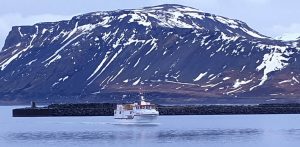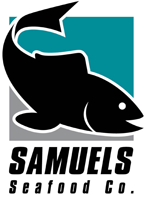Iceland: Strong Genes and A Small Footprint.
Often referred to as “The Nation with Fishing in its Genes,” Iceland is a powerhouse, leading the world in sustainable seafood production. Iceland has taken a huge responsibility in managing its fisheries while focusing on the sustainable use of the fish stocks and good treatment of the marine ecosystem. They have also become the poster country for developing a quota system for their fishermen, which ensures responsible and sustainable fishing practices, and enforcing severe penalties for breaches of the fisheries management legislation.
A key aspect that allows Iceland to remain so responsible is that the country manages the fishing chain and has complete control over how everything is carried out. Because it is the only country that does this, it gives Iceland a unique position.
This is because sustainable and responsible fishery and aquaculture management is extremely important in Iceland as fish are one of the main pillars of the Icelandic economy. In fact, fish are both the main food supply and the chief export of Iceland. Historical evidence suggests that Icelandic fish exports date back to at least the 12th century. With all that experience, they certainly have a lot to teach the world.
 According to an environmental report from Fisheries Iceland, through technological advancements and sustainability initiative, the industry uses 43% less fossil fuels than they used in 1990, and are on track to increase that difference to 54% by 2030.
According to an environmental report from Fisheries Iceland, through technological advancements and sustainability initiative, the industry uses 43% less fossil fuels than they used in 1990, and are on track to increase that difference to 54% by 2030.
A new study in Iceland, by the Icelandic Environmental Consultancy, has also reaffirmed Iceland’s domination in the realm of sustainable aquaculture management, claiming that the carbon footprint in this Arctic nation is lower than most other forms of food production. The detailed scientific study reports that in 2017 the total carbon dioxide (CO2) release was equal to 31,000 tonnes, which is around the same as traditional fishing operations, but much lower than general food production.
Samuels offers high quality and sustainable options from Iceland. The seafood from Iceland is an interesting mix of traditional and unique seafood. Traditional seafood typically includes salted and cured products and classic items like Char, Rosefish, Turbot, Flounder, Haddock, Pollock, and Cod, while unique options include Wolffish, Cod Cheeks, and Cod Roe.
Wolffish is an interesting creature. They’re known for their ability to keep their blood moving in their cold habitat. But this cold-as-ice fish really heats up a kitchen. Wolffish have a mild, delicious sweet flavor reminiscent of Crab because of its shellfish diet. The firm texture holds up really well in a fish stew, and it’s especially great when fried or roasted.
The Cheeks and Roe, from beautiful wild caught Icelandic Cod, are another unique option if you are looking to wow your guests. Because this area of the fish gets a lot of movement, Cod Cheeks are extremely succulent and sweet, offering uniqueness and versatility to your dishes. You can fry them, saute them, or prepare them in a soup, salad, or pasta, just like you would a Scallop. Cod Roe is also a surprising and versatile option that adds a touch of creaminess and a fun pop to any dish. Chefs love to marinate them in sweet and hot spices before using them on salads and sushi rolls.
Iceland has been described as “the future of fish” in both the field of aquaculture and fishery management because of their commitment to quality, sustainability and unwavering accountability. This commitment allows you to serve your guests the highest caliber seafood from Iceland with passion and pride in every bite. Talk to your Samuels Agent about adding Icelandic products to your menus.






